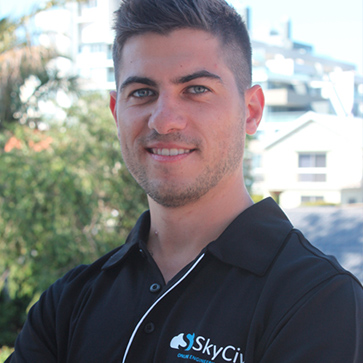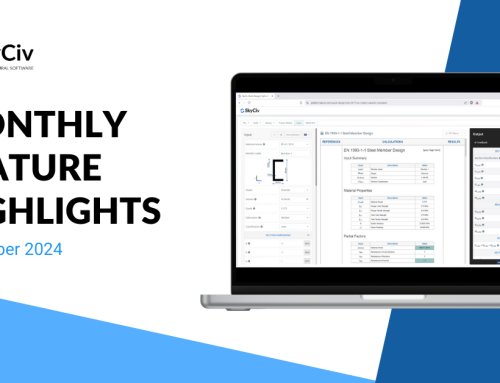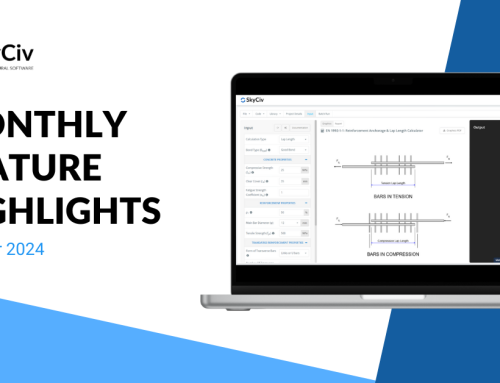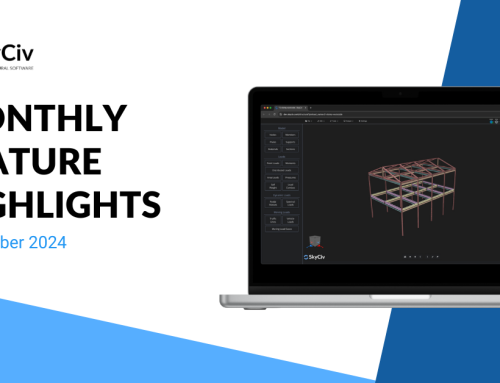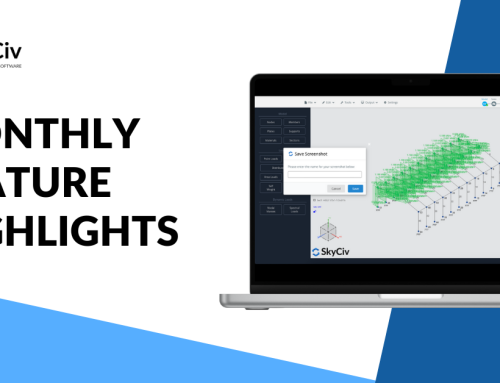1. Automatic Solver Tester against Traditional Software Results
One of our most important internal processes we have to ensure the accuracy of our results is an automatic solver checker. This script goes through more than one thousand models of verified models and compares the results of our solver to these known values. With each file, the script checks every single result (reactions, shear force, bending moment, deflection, stresses and more) for every single member in the project. This amounts to the checking of literally tens of millions of results. We run this solver prior to every update, and will not release until the results match up at 100%.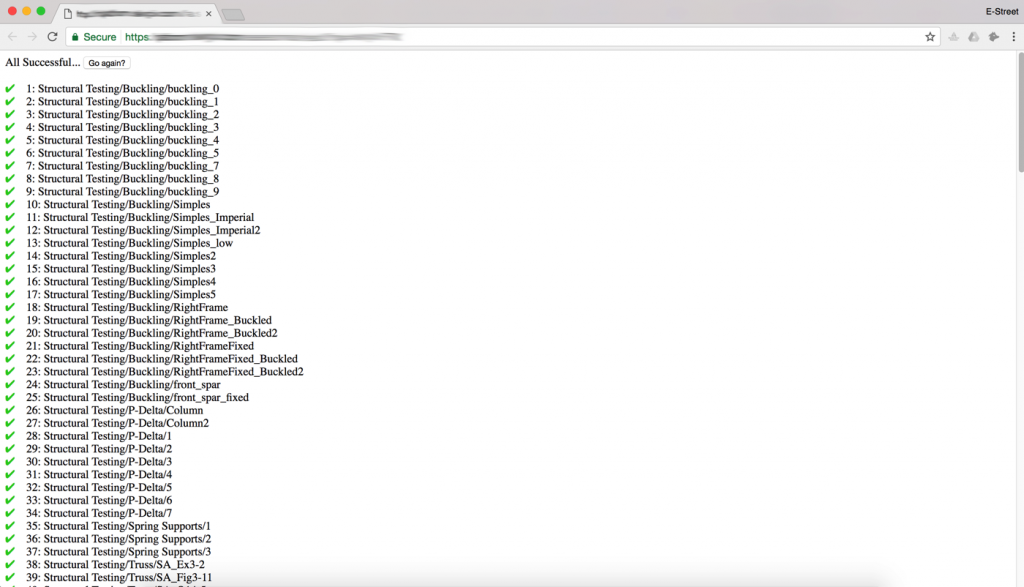 Example of the output from our solver tester
Example of the output from our solver tester
2. Built by Engineers, for Engineers
Our in house product development team is comprised entirely of qualified Structural and Mechanical Engineers. With years of experience in hands-on Structural Design, our team knows exactly what they are building. This ensures there are no gaps between product development and technical knowledge; it is all integrated. The quality is also dependent on the fact that our software is all built completely in-house, by full-time SkyCiv employees - nothing is outsourced to ensure our product remains at a higher standard. Our team is also extremely passionate about every corner of the software. We will spend hours planning and building a function to make sure it runs as we want it to. I believe anyone who has used our software can see the close attention to detail we put into making the software intuitive, powerful and enjoyable to use.3. Tried and Tested
The SkyCiv Structural Analysis Software has had more than 8 million solves. That's 8 million structures that have been analysed by the software and then reviewed by engineers. Engineers are a careful breed - double-checking work, verifying solutions and (the good ones) take a software result with a grain of salt. Engineers have kicked the tires of our software with millions of their projects - with no result discrepancies since the automatic solver tester was implemented more than two years ago.4. 3rd Party Validation
SkyCiv has also undergone third-party scrutineering in order to be on a number of approved software lists. This process is performed by independent qualified Professional Engineers (P.E), to validate the results of our software. This includes modelling and analysing a number of sample structures, features and FEA settings. For instance, there are separate tests for static, buckling and nonlinear analysis to ensure the software is functional and accurate across the board. One such approved list that SkyCiv is on, is the Hong Kong Building Department's pre-accepted Structural Software list, which we are required to be on for building design submissions in Hong Kong.5. Open Reporting
Still unsure? SkyCiv is committed to open, transparent software - showing all calculations, assumptions and results in our design reports. SkyCiv's design software (Reinforced Concrete, Connection Design and Member Design) all have open reporting, so engineers can review the step by step calculations of the software. The reports are in a professional PDF format, click here for a sample AISC 360 Design Report from SkyCiv's Structural 3D software. Allowing engineers to review the calculations of the software, means the assumptions, calculations and results can all be reviewed and checked prior to an engineer signing off on the design.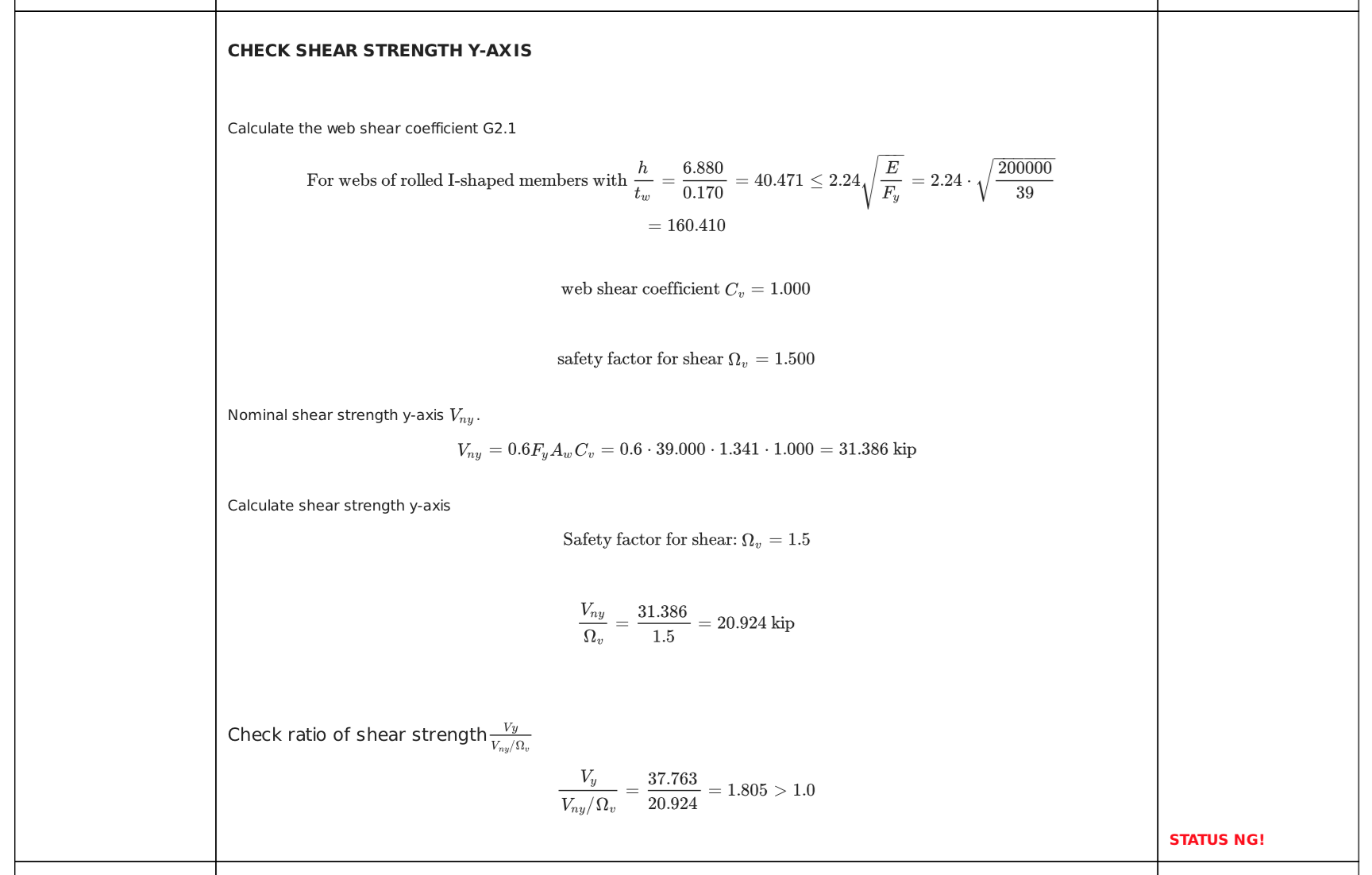
6. Tracking our Bugs
Our live version is constantly feeding us bugs and errors received by our users. This bug tracking allows us to identify any issues with the software so that they can be repaired. As we are based in the cloud, we can repair the bug, run the solver check and release an update without the user ever noticing. This means we are constantly improving the User Experience by constantly monitoring, repairing and updating the software.7. Beta Release
We generally try to release any key functions or features as a beta version, prior to full release. What this does is allows our users to use the program more apprehensively and provide us with valuable information to ensure the accuracy and performance of the function. This is common practice in software development and ensures the user is aware that this part of the program may not be at 100% and should be used conservatively. This is paramount in ensuring quality. We are testing the release on a variety of real-life applications, across combinations of devices, operating systems and browsers. As you can imagine, this amounts to thousands of combinations that we could never test internally.
Sam Carigliano
CEO and Co-Founder of SkyCiv
BEng (Civil), BCom
LinkedIn
CEO and Co-Founder of SkyCiv
BEng (Civil), BCom

